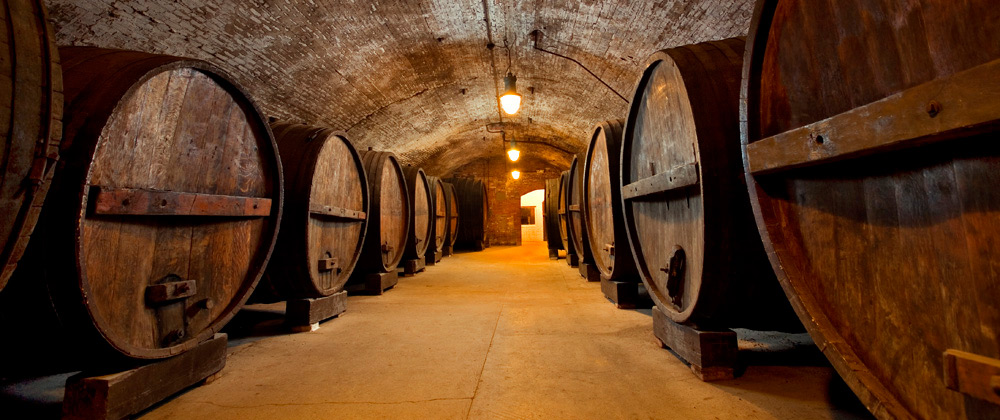The Brotherhood Winery is commonly considered to beAmerica’s oldest winery established in 1839. It is located in Washingtonville, the state ofNew York, in the Hudson River Region AVA. The winery was started by European immigrant John Jaques, who later deeded it to his three sons.
Actually, the winery does not grow grapes in neighbor vineyards, thus limiting its local production. The major reason for this is that they sold adjoining lands to various commerce establishments, such as local shops and supermarkets.
As a result, they purchase the world’s most widely known grape varieties intended for wine production. They include: Chardonnay, Zinfandel and Cabernet Sauvignon from Finger Lakes and Long Island and Merlot – a French technical type of grapes used for varietal wines fromTexas.
However, despite this fact, the winery has its own production of 100 acres inHighlandlocated near the Hudson River and just north to Washingtonville, where they grow several Vinifera and Hybrid grape varieties, known asConcord, Agria, Riesling and Pinot Noir.
While making their wine, the viticulturists employ specific viticulture processes to produce truly tasty and unusual wine varietals. They not only control and monitor various pests and diseases, fertilize and irrigate the vineyards, but also monitor fruit characteristics and their development and decide when to harvest or prune grape vines during the wintertime. Thus, “right rootstock, planting, pruning, training, protecting the vines” (the Brotherhood Winery, 2013, para. 4) are the major viticulture processes made by any viticulturist. Hence, utilizing various innovative techniques can help winemakers produce delightfully tasty and unique wines.
Focusing our intention on the total winery areas, it is possible to say that they have a pretty wide winery area with a huge number of various buildings that are just for you to enjoy during your visit: the museum in hand-excavated cellars, the mansion that is located in the west end of their campus and surrounded with some stone structures from the mid 1800’s, Vinum 4 stars Cafe, Gift Shop, Grand Monarque Hall Private Party Offerings, Blackbuilding with an actual Crushing vats, Fermenting pots and of course Tasting Room.
In fact, they produce 800 thousands of cases for outsourcing activities per year. As widely known, wine is considered to be very susceptible to temperature changes. Thus, the Brotherhood Winery keeps their wine creations in the most proper wine storage temperature (50-55 °F). Additionally, they use American Oak barrels and have 45 hundred gallon barrels for storage, aging and wine production.
In order to make excellent quality wine varietals, the winemakers strictly adhere to the wine production technologies, which consist of the following essential vinification practices: 1) planning (grapes are conveyed to the winery and then processed and pressed); 2) primary fermentation (it creates wine’s alcohol); 3) secondary fermentation (it lasts from 3 to 6 months, depending on the type of the future wine); 4) purifying or refining (occurs after fermentation to remove any solid parts); 5) preserving (it should be preserved with potassium sorbate or sulfur dioxide); 6) bolting and labeling.
Furthermore, they produce different cocktails, such as sherry, Sparkling Wine utilizing Charmat method – commonly used mainly in industrial productions.
Being at the Brotherhood Winery, we as a group had a young guide, who had enough knowledge about the history and events of the winery. However, he did not say much about the technical aspects for growing the grapes (approach to agriculture) and vinification practices. During the tasting our guide was able to tell us about the specific grape varieties, different wine styles and the food to pair with. The tasting was conducted in a clean, quiet, and well-ventilated area. All tasters were provided with spitting caps. Overall, the customer service was good and full of a helpful and positive experience.
Tasting notes of the wines that we tasted were as follows: sparkling wine “Blanc de Blanc” made from Chardonnay Grape – very dry, acidic and crisp with notes of citrus and lemon. As for me, I would pair it with a cheese plate and just simple grapes. The second tasting note was Brotherhood Dry Riesling – a dry and lemony wine dominated by green apples. Matching Brotherhood Dry Riesling with spicy food would be a great combination. The third one is known as Rosario Specialty wine –Concord, Agria grape – fruity and sweet. It would be great to pair it with Custard Tard and strawberry coulis. The forth note was Brotherhood Pinot Noir – a dry, tart and easy wine with some hints of oak, cherries, berries and vanilla. And the last one was Brotherhood Merlot – a soft, dry, medium-bodied red wine with notes of blueberries and black currants, which actually would pair with red meat.
Thus, taking the above-mentioned information into consideration, it is possible to draw a conclusion that the Brotherhood Winery is truly a great place where you can not only carry out a tasting of unique and unusual wine collections, but also purchase innovative and delightfully tasty wine varietals, as well as have lots of fun too. As for the comments and recommendations it should be argued that one of the main focuses concerning the Brotherhood Winery must be paid not only to the history and events of the winery itself , but also to some approaches to agriculture and viticulture processes applied by the wine factory.




